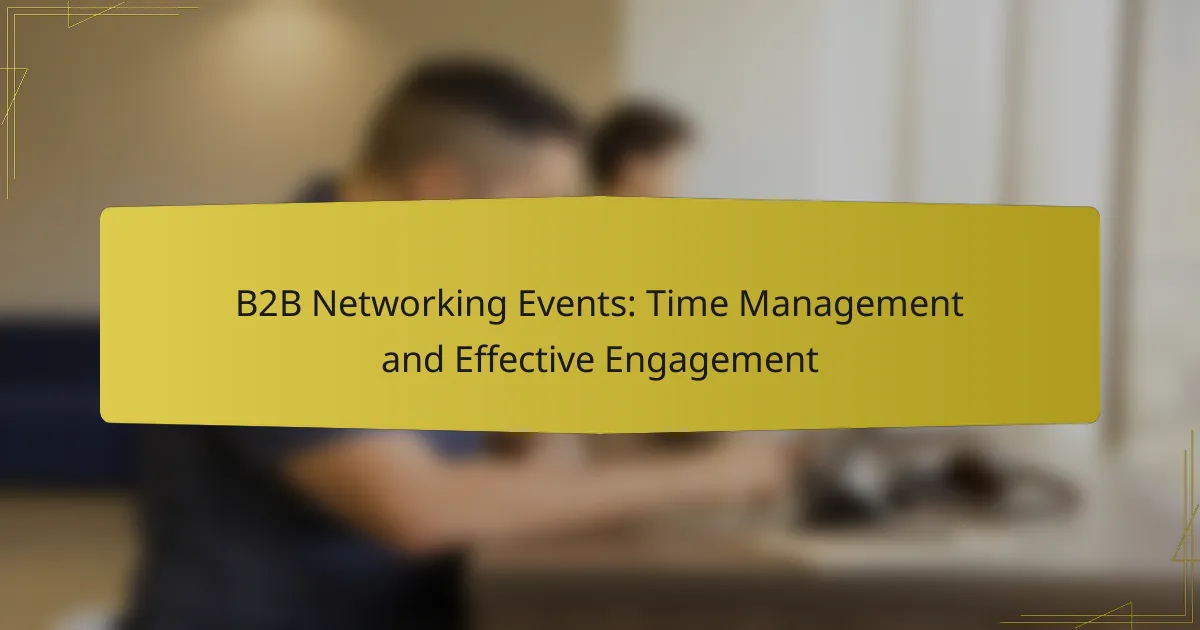B2B networking events present valuable opportunities for professionals to connect and collaborate, but effective time management is essential to make the most of these occasions. By prioritizing activities and employing targeted strategies, attendees can enhance their engagement and foster meaningful relationships. Utilizing the right tools can further streamline the process, ensuring that every moment spent at the event contributes to building impactful connections.

How to Manage Time Effectively at B2B Networking Events?
Managing time effectively at B2B networking events is crucial for maximizing connections and opportunities. By prioritizing activities and using tools, you can ensure that your time is spent on high-impact interactions.
Prioritize key sessions
Identify the most valuable sessions that align with your goals before the event. Focus on workshops, panels, or presentations that feature industry leaders or relevant topics.
Consider creating a shortlist of must-attend sessions and allocating time for networking breaks to connect with speakers and attendees afterward. This approach helps you make the most of your time.
Use scheduling tools
Leverage digital scheduling tools or event apps to organize your agenda. Many events provide official apps that allow you to view schedules, set reminders, and even connect with other attendees.
Utilizing these tools can streamline your experience, ensuring you don’t miss important sessions while allowing for flexibility in your plans.
Set specific goals
Establish clear objectives for what you want to achieve at the event. Whether it’s meeting a certain number of contacts or learning about specific trends, having defined goals keeps you focused.
Write down your goals and review them throughout the event to stay on track. This practice helps prevent aimless wandering and ensures productive networking.
Limit distractions
Minimize distractions by setting boundaries during the event. Turn off notifications on your phone and avoid engaging in lengthy conversations that veer off-topic.
Consider designating specific times for checking emails or social media, allowing you to concentrate fully on networking opportunities during the event.
Follow up promptly
After the event, reach out to new contacts within a few days. A timely follow-up reinforces your connection and shows your interest in maintaining the relationship.
Use personalized messages referencing your conversation to make your outreach more impactful. This practice can significantly enhance the likelihood of future collaborations.
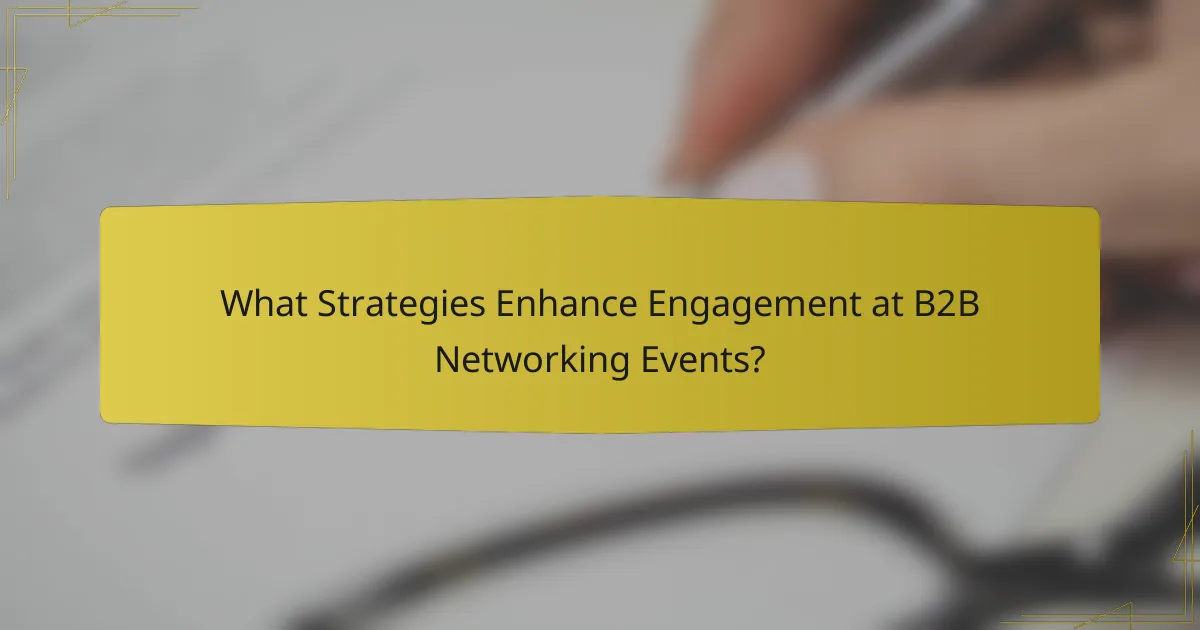
What Strategies Enhance Engagement at B2B Networking Events?
Effective engagement at B2B networking events hinges on preparation and active participation. By employing targeted strategies, attendees can maximize their networking potential and foster meaningful connections.
Prepare an elevator pitch
An elevator pitch is a concise, persuasive speech that introduces you and your business in about 30 seconds. This brief introduction should highlight your unique value proposition and what you aim to achieve through networking. Tailor your pitch to resonate with the specific audience you are addressing.
Practice your elevator pitch to ensure clarity and confidence. Focus on key points that differentiate your business and invite further conversation. Avoid jargon and keep it relatable to engage your listeners effectively.
Utilize social media
Social media platforms like LinkedIn and Twitter are invaluable for enhancing engagement before, during, and after networking events. Use these channels to connect with other attendees, share insights, and promote your participation. Engaging with event hashtags can also increase your visibility.
Consider posting updates or insights during the event to encourage interaction. Follow up with connections post-event by sending personalized messages or sharing relevant content, which helps solidify relationships and keeps the conversation going.
Participate in workshops
Workshops at networking events provide opportunities for hands-on learning and deeper engagement. Actively participating in these sessions allows you to showcase your expertise while connecting with others who share similar interests. This collaborative environment fosters stronger relationships.
Choose workshops that align with your goals and interests. Engaging in discussions and activities during these sessions can lead to valuable connections and insights that extend beyond the event itself.
Engage in active listening
Active listening is crucial for meaningful engagement at networking events. It involves fully concentrating, understanding, and responding thoughtfully to others. By demonstrating genuine interest in what others say, you build rapport and trust, which are essential for effective networking.
Practice active listening by asking open-ended questions and reflecting on the speaker’s points. This not only enhances the conversation but also encourages others to share more, enriching your networking experience. Avoid distractions and focus on the interaction to maximize your engagement.
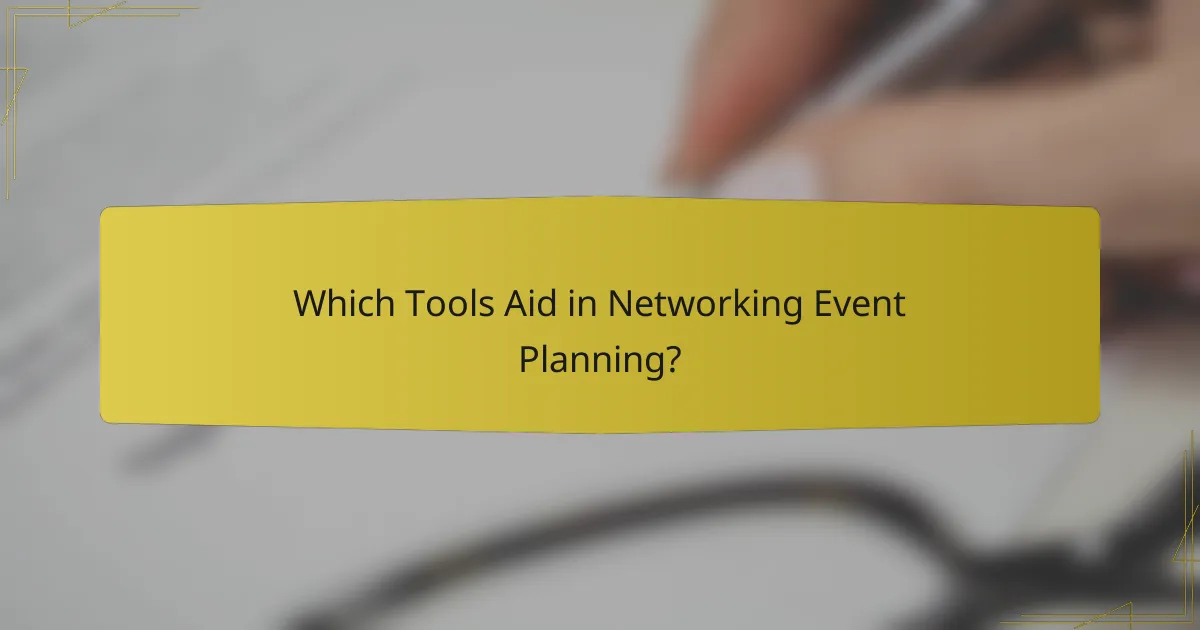
Which Tools Aid in Networking Event Planning?
Several tools can significantly enhance the planning and execution of networking events. Utilizing the right platforms streamlines registration, fosters connections, manages event logistics, and facilitates communication among participants.
Eventbrite for registration
Eventbrite is a popular platform for managing event registration. It allows organizers to create custom event pages, sell tickets, and track RSVPs efficiently. This tool is particularly useful for events with a large number of attendees, as it automates the registration process and provides real-time data on ticket sales.
When using Eventbrite, consider setting up early bird pricing to encourage early registrations. Additionally, ensure your event page is visually appealing and contains all necessary information, such as date, time, location, and agenda.
LinkedIn for connections
LinkedIn serves as a powerful networking tool for professionals looking to connect before, during, and after events. Attendees can use the platform to find and reach out to other participants, facilitating meaningful connections that extend beyond the event itself.
To maximize LinkedIn’s potential, create an event-specific group or page where attendees can engage prior to the event. Encourage participants to share their profiles and interests, which can help in establishing connections that are relevant and beneficial.
Whova for event management
Whova is an all-in-one event management solution that enhances attendee engagement and streamlines logistics. It offers features such as agenda management, attendee networking, and live polling, making it easier for organizers to manage events effectively.
Utilizing Whova can improve the attendee experience by allowing participants to customize their agendas and connect with others based on shared interests. Consider using its analytics features to gather feedback and insights post-event, which can inform future planning.
Slack for communication
Slack is an effective communication tool that can facilitate real-time interaction among event participants. By creating dedicated channels for different topics or sessions, attendees can easily share insights, ask questions, and network with one another during the event.
To leverage Slack effectively, establish clear guidelines for communication and encourage active participation. Consider integrating Slack with other tools used for the event to streamline updates and information sharing, ensuring that everyone stays informed and engaged.
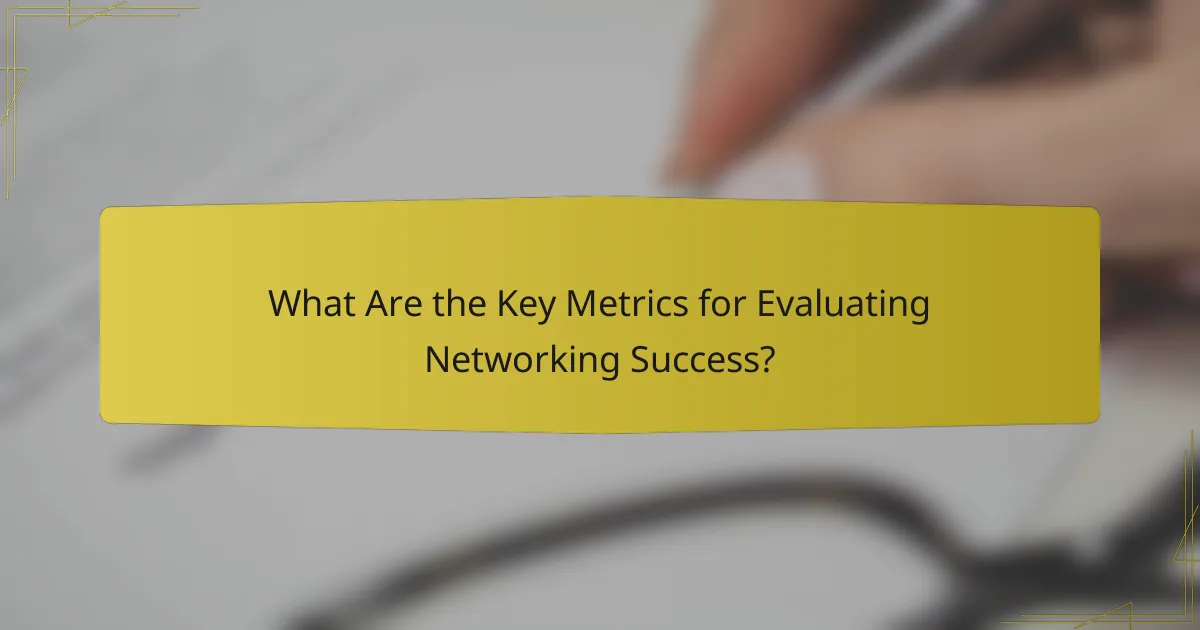
What Are the Key Metrics for Evaluating Networking Success?
Key metrics for evaluating networking success include the number of connections made, follow-up response rates, and engagement levels during sessions. These metrics help assess the effectiveness of networking efforts and identify areas for improvement.
Number of connections made
The number of connections made during a networking event is a primary indicator of success. Tracking how many new contacts you establish can provide insight into the event’s effectiveness and your networking skills. Aim for a target range of 5 to 15 meaningful connections, depending on the event size.
To maximize connections, prepare a brief introduction and engage with attendees actively. Consider using a contact management app to organize and follow up with new contacts efficiently.
Follow-up response rates
Follow-up response rates measure how many of your new connections engage with you after the event. A good response rate typically falls between 20% to 50%, depending on the industry and the nature of your outreach. This metric indicates the quality of your initial interactions and the relevance of your follow-up communication.
To improve response rates, personalize your follow-up messages and reference specific topics discussed during the event. Avoid generic templates, as tailored messages tend to resonate better with recipients.
Engagement levels during sessions
Engagement levels during networking sessions reflect how actively participants interact with each other and the content presented. High engagement can be gauged through participation in discussions, questions asked, and overall enthusiasm. Aim for interactive formats, such as workshops or roundtable discussions, to enhance engagement.
To foster engagement, encourage attendees to share their experiences and insights. Providing opportunities for small group discussions can also facilitate deeper connections and more meaningful exchanges.
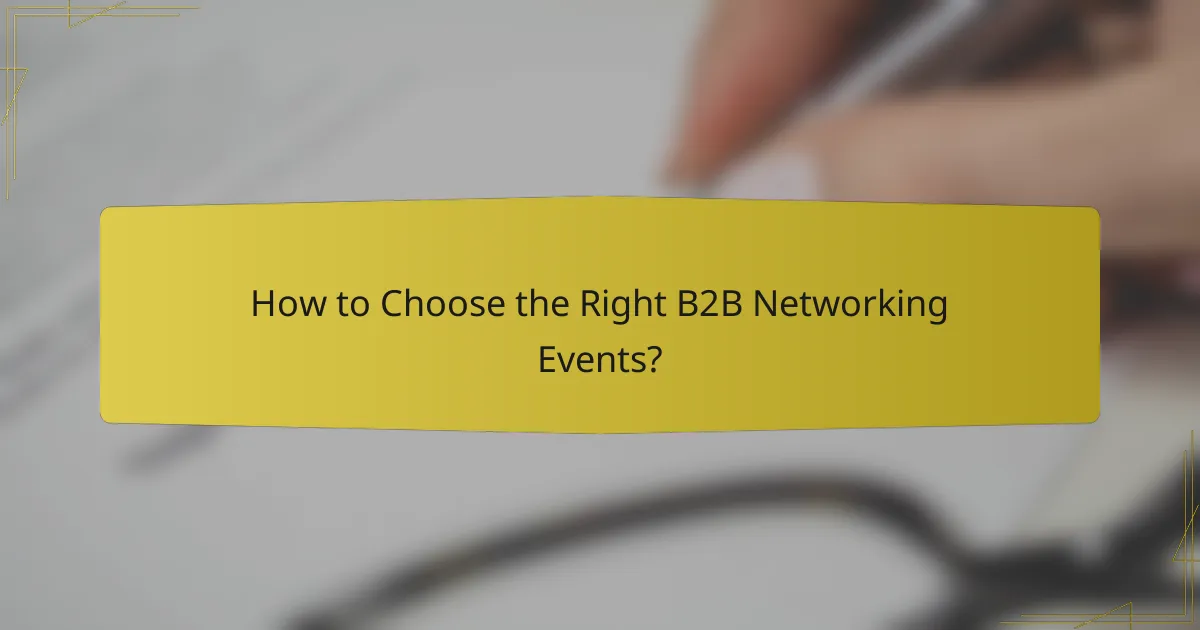
How to Choose the Right B2B Networking Events?
Selecting the right B2B networking events involves understanding your industry needs and the profiles of potential attendees. Focus on events that align with your business goals and provide opportunities for meaningful connections.
Identify industry relevance
When choosing networking events, prioritize those that are closely aligned with your industry. Look for conferences, trade shows, or seminars that feature topics and speakers relevant to your field. This ensures that the conversations you engage in will be pertinent and beneficial.
Consider the event’s theme and focus areas. For instance, if you operate in technology, events centered around innovation or digital transformation would be more valuable than general business gatherings.
Evaluate attendee profiles
Understanding who will be attending the event is crucial. Review the list of participants, speakers, and sponsors to gauge the quality of networking opportunities. Aim for events where your target audience, such as potential clients or industry leaders, will be present.
Utilize platforms like LinkedIn to research attendees and their backgrounds. This can help you identify key individuals to connect with and tailor your approach accordingly. Networking with the right people can significantly enhance the value you gain from the event.
